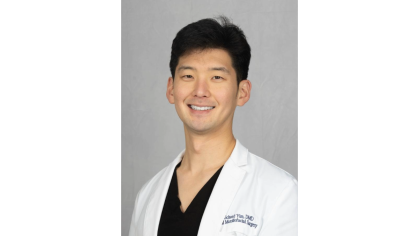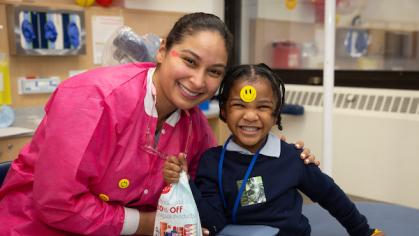Thanks to Funding for Digital Technology, RSDM Will Improve Treatment for HIV Patients
A trip to the dentist can be especially difficult for patients with HIV/AIDS, including the process of getting a dental impression.
“They’re immunocompromised so they get sick more often and sometimes have an increased gag reflex, oftentimes experiencing nausea. They typically take a lot of medications which can have many side effects. And they have many different doctor visits and that can be exhausting,” said Nicholas DePinto, director of RSDM’s Community Oriented Dental Education (CODE) program in South Jersey, which treats many patients with HIV/AIDS.
But time in the dental chair will soon be dramatically reduced, thanks to a $150,000 federal grant for digital impression scanners in the CODE clinics. These allow impressions to be completed in under a minute, as opposed to ten minutes or more for traditional, putty impressions.
A dental impression is used to create a reproduction of a patient's mouth for diagnosis and the creation of crowns, bridges, dentures and orthodontic appliances. Non-digital methods require patients to bite down on a putty-filled device for several minutes, which many find uncomfortable. A digital scanner can create an image in seconds after a wand is inserted in the mouth.
The new technology will not only make dental visits speedier, they’ll result in less discomfort, said DePinto, the grant’s principal investigator.
The award also funds an additional dental chair in every CODE clinic. “Each chair is expected to increase the number of visits by a few thousand patients a year,’’ said DePinto. The funding is part of a Ryan White capacity development grant, which is awarded for expanding and enhancing access to care for HIV/AIDS patients in underserved regions.
Since 1992, CODE has received Ryan White funding but this is the first time it has gotten funding to expand capacity. All RSDM fourth-year students complete a rotation at CODE, which involves hands-on learning about the special needs of HIV/AIDS patients.
“They’re going to be seeing these patients in their practice after they graduate, and we want them to be very comfortable treating them. We teach them not to stigmatize and we’ve made great strides. The students have been very receptive,’’ says DePinto.
After the scanners have been used for some time, DePinto will develop a plan to assess patient satisfaction. “We want to continually improve quality and effectiveness,’’ he said.




